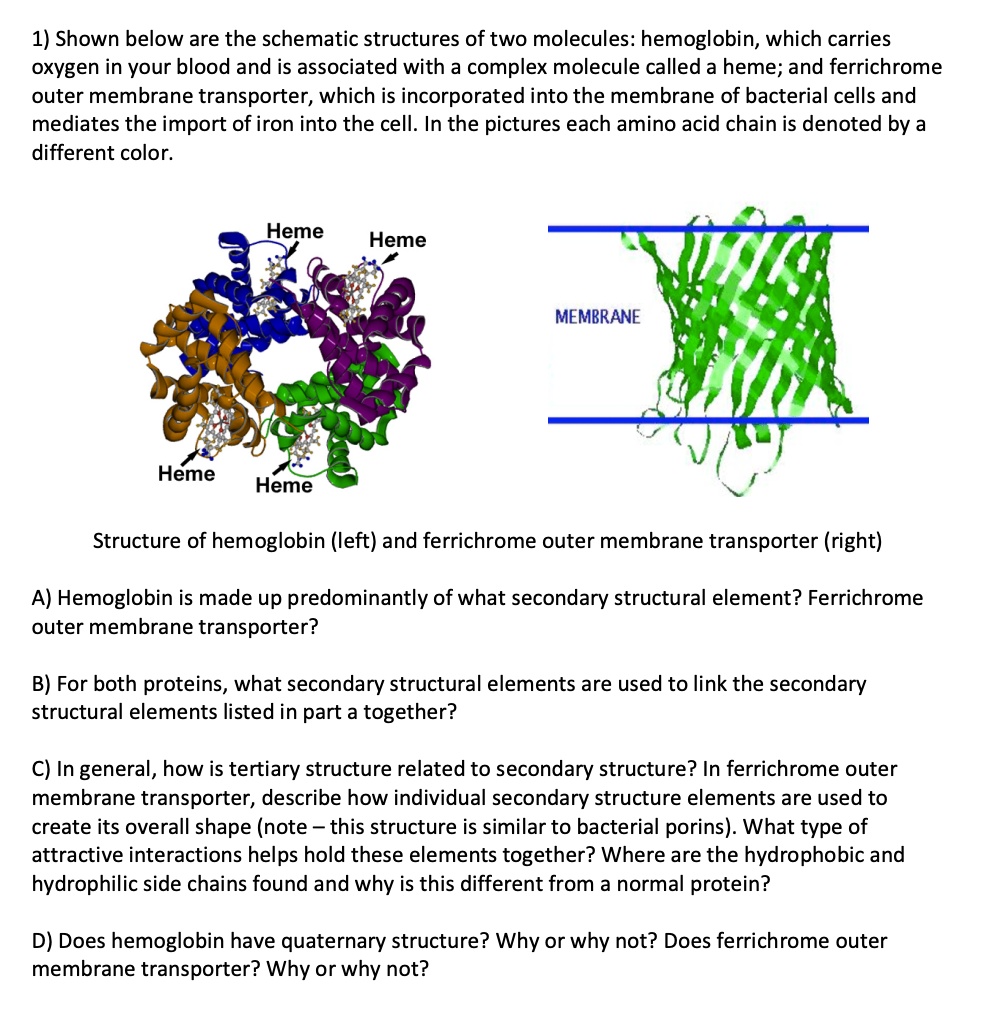

Such non-amino acid components are called "cofactors" or "coenzymes" or "prosthetic groups", more or less interchangeably. In addition to the protein components, both myoglobin (Mb) and hemoglobin (Hb) require a non-amino acid component to actually complex with the bound oxygen. You can see that the peptide twists and turns to form a relatively compact globular structure. This shows the backbone of the single peptide chain that makes up myoglobin. Myoglobin Polypeptide Chain and Heme Cofactor This tutorial will use hemoglobin and myoglobin to illustrate some general aspects of secondary, tertiary and quaternary structure in proteins. Sperm whale myoglobin consists of 153 amino acids (Mw = 17,199). It serves as an oxygen reservoir, picking up O2 from the hemoglobin and delivering it to the cells as O2 is used up in metabolism. The richest source of myoglobin is the muscle of aquatic diving mammals, such as seals or whales, since these tissues need a very rich store of oxygen to see them through long anoxic periods during a dive.

Myglobin is the oxygen storage protein of the muscle. Hemoglobin carries oxygen from the lungs to the tissues. Myoglobin and hemoglobin are proteins designed to carry oxygen. Hb Alpha subunits show little interaction The Hemoglobin Alpha and Beta subunits interact Hemoglobin subunit folding is similar to myoglobin Tutorial developed by Ross Feldberg, Dept. Untitled Document Myoglobin and Hemoglobin Structure


 0 kommentar(er)
0 kommentar(er)
